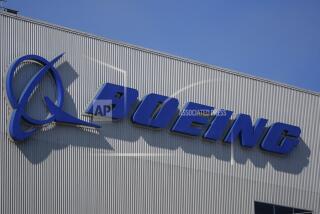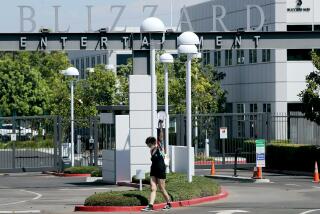Layoffs Target Workers at Space Center
- Share via
KENNEDY SPACE CENTER, Fla. — NASA announced Friday that 450 private contract employees at the Kennedy Space Center will be laid off or transferred because of the Jan. 28 explosion of the space shuttle Challenger.
The newest layoffs are in addition to 650 other workers that contractors had planned to drop from payrolls starting Friday because they have completed construction of a second shuttle launch pad, space center officials said.
The twin layoffs will reduce the center work force from about 16,000 to 14,900, of which about 2,000 are NASA civil service personnel.
“During the last few weeks we have been working with headquarters and the other NASA centers on a work plan,” said Thomas E. Utsman, deputy center director, at a news conference. “We feel we have a good work plan that will keep our employees occupied.
“We’re planning on the basis of a 12-month standdown in shuttle launches,” he said. “This is just planning.”
He said additional layoffs could occur if launches are delayed significantly more than a year.
Utsman said those losing jobs include technicians, engineers, managers, inspectors and journeyman workers. “Those with critical skills are less affected than the journeymen,” he said.
Lockheed Space Operations Center, which manages the shuttle processing contract, will lose 360 of the accident-related jobs and McDonnell Douglas Astronautics Co. 90. These jobs will be phased out in the next three months.
Any reduction in the civil service force will depend on the budget passed by Congress, Utsman said. He predicted minor cuts in staff, which he said could be handled by not filling vacancies.
Also at the news conference, Bob Sieck, director of shuttle operations, said space shuttle Atlantis will be mated with rocket boosters and a fuel tank next week.
The two rocket boosters will be like the one that is a leading suspect in the Challenger accident, Sieck said. There will be a program review before Atlantis is moved to a launch pad to test new supports for a high-powered Centaur upper stage.
Centaur stages will be carried in the shuttle cargo bay to boost planetary payloads whenever the remaining three shuttles in the fleet resume flights.
After all checks are completed, the craft will be returned to an assembly building and the boosters and fuel tank removed.
Sieck cited this testing as an example of work that will be done during the coming months while the shuttles are grounded.
More to Read
Sign up for Essential California
The most important California stories and recommendations in your inbox every morning.
You may occasionally receive promotional content from the Los Angeles Times.










